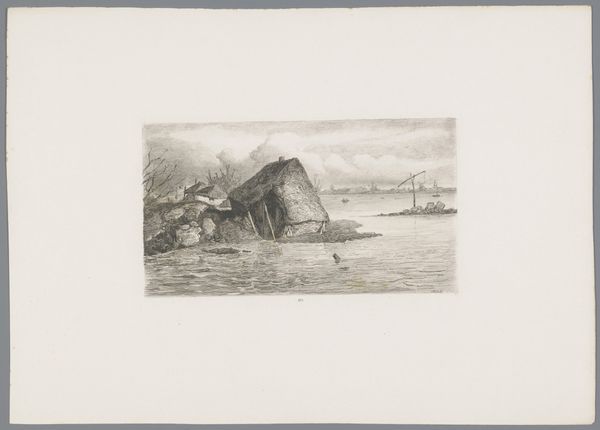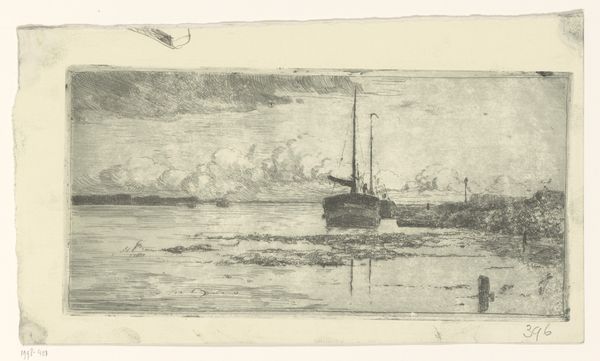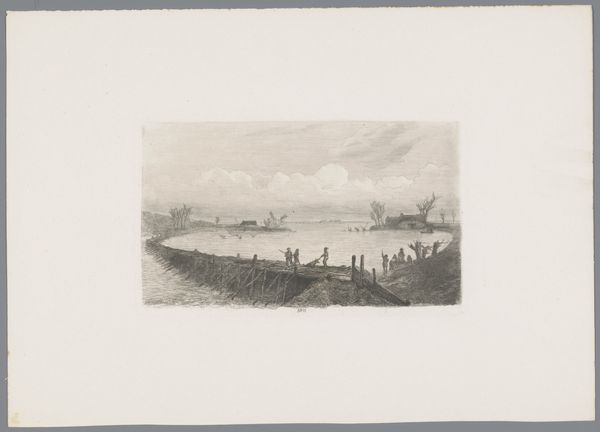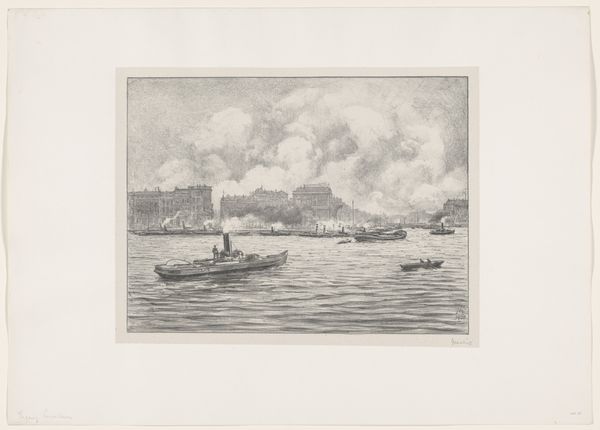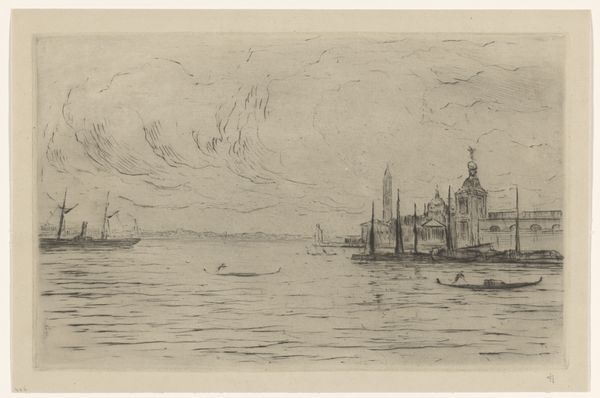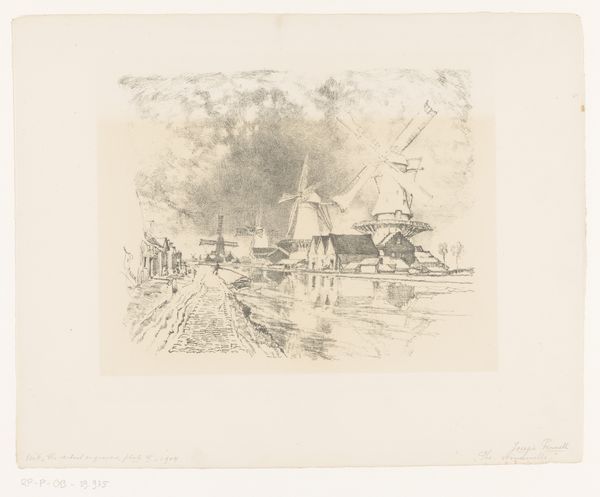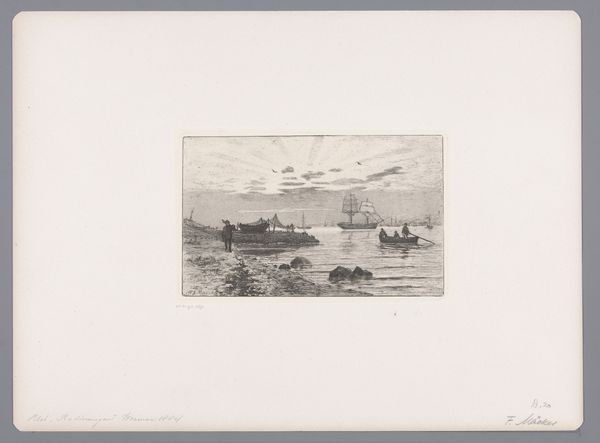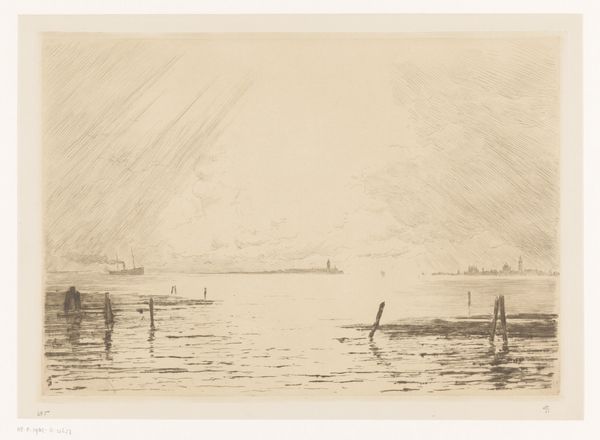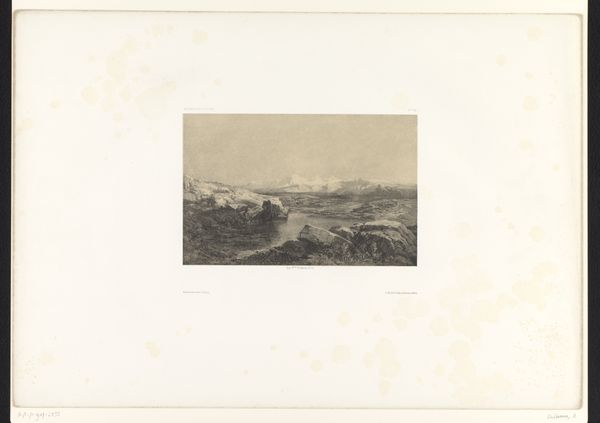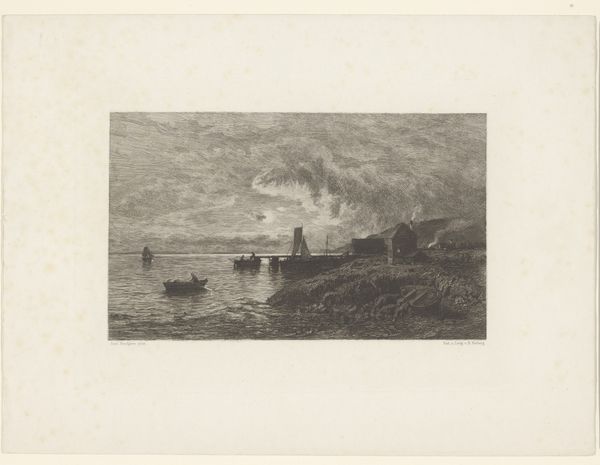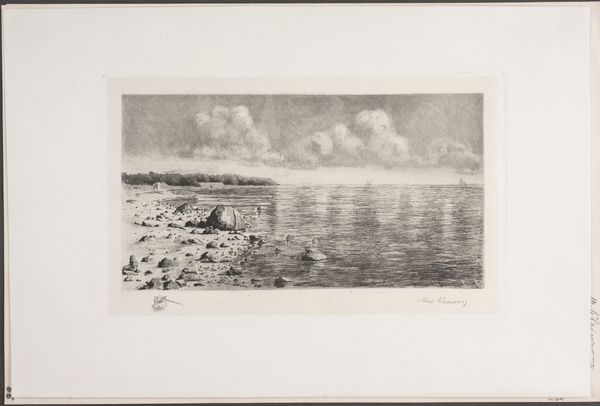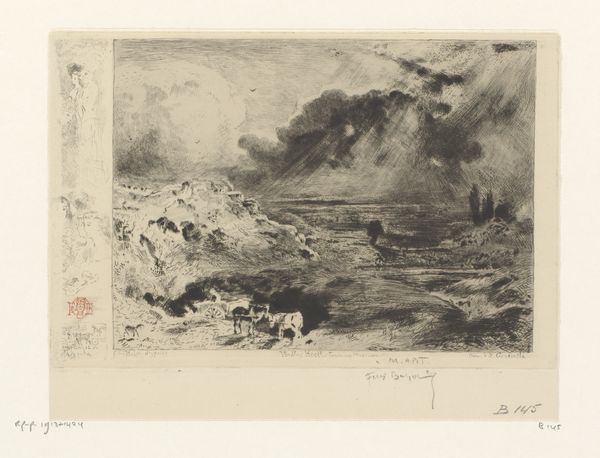
print, etching
#
aged paper
#
dutch-golden-age
# print
#
etching
#
landscape
#
watercolor
#
realism
#
monochrome
Dimensions: height 317 mm, width 441 mm
Copyright: Rijks Museum: Open Domain
Curator: Here we have "Dune Landscape with Sand Excavation and Boats," an etching by Willem de Zwart, created around 1885. What’s your first impression? Editor: It feels stark, a sort of beautiful melancholy. The landscape seems to press down under this oppressive sky, even in monochrome. It’s oddly dramatic. Curator: That’s a fitting observation. De Zwart was working at a time when Dutch artists were very engaged with representing their immediate surroundings. The etching is of course, more easily disseminated. Its style connects with the Hague School and a kind of tonalist realism focused on accurately portraying light and atmosphere and daily lives. Editor: Definitely a quiet story being told here, although that sky is restless, a turbulent canvas in itself. I keep wondering about those stark white gashes in the cliffs – the sand excavations? It makes me think of impermanence, the slow violence we inflict on the land. Curator: Right. The social element can be located there, in the presence of the excavations. What is lost and what is gained? One interpretation might consider those scars and their impacts on a shared environmental consciousness during the late 19th century. These subjects connect with a broader theme, the growth of Dutch cities in contrast with existing conditions of landscape. Editor: Yes! Even the boats become ambiguous. Are they peaceful or intrusions? Are they waiting expectantly or in silent protest? The spars of the boat in the front become simple uprights to contrast with the diagonal tension of the sky. It's unsettling in its serenity. Curator: Considering how the Netherlands changed in the late 1800s due to expanding urbanization, that feeling resonates perfectly. The choice of print also places this in the domestic sphere: images of landscapes such as these would be more accessible to people and arguably were part of a national narrative of shared space and common experience. Editor: It's thought-provoking how a relatively simple landscape, rendered in monochrome, can evoke such layered interpretations. Thanks to De Zwart’s masterful treatment of light and shadow we have much to unpack, visually and conceptually. Curator: Agreed. He really did manage to distill a complicated relationship into a scene.
Comments
No comments
Be the first to comment and join the conversation on the ultimate creative platform.
